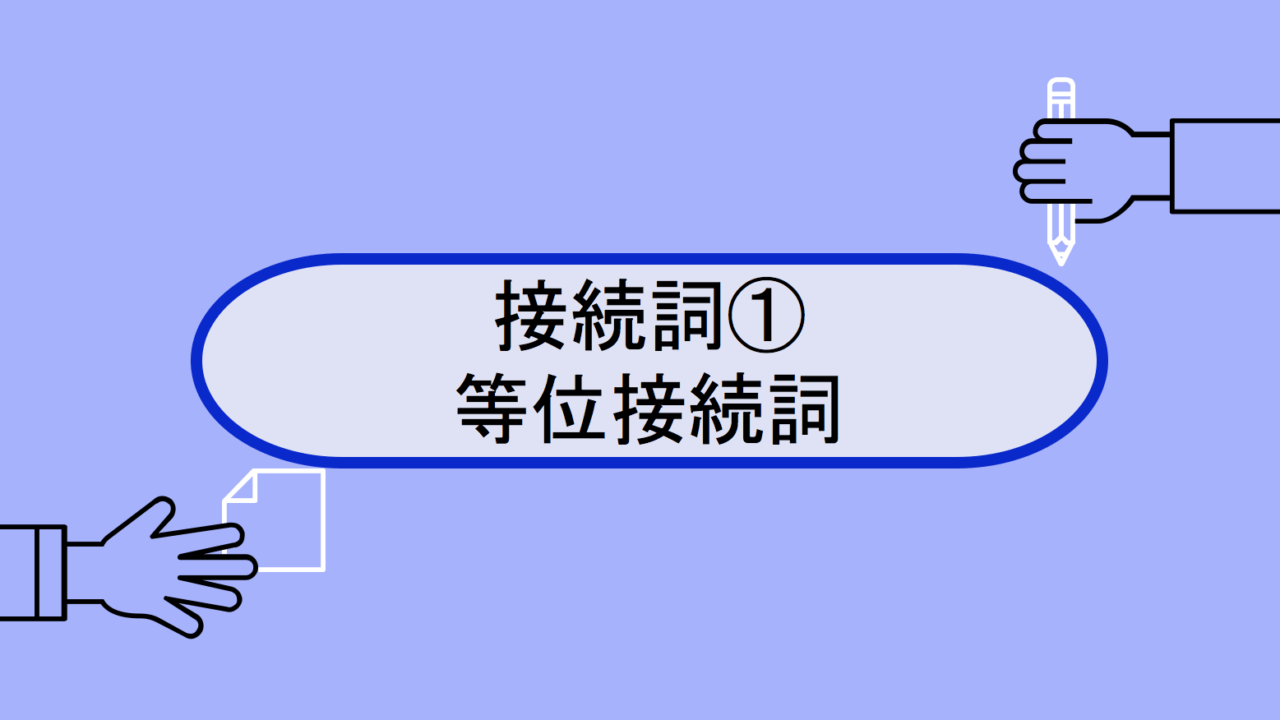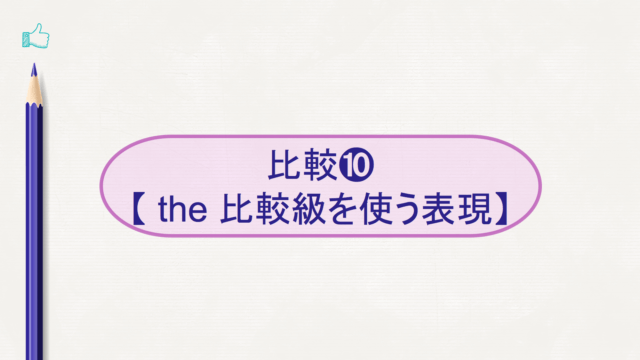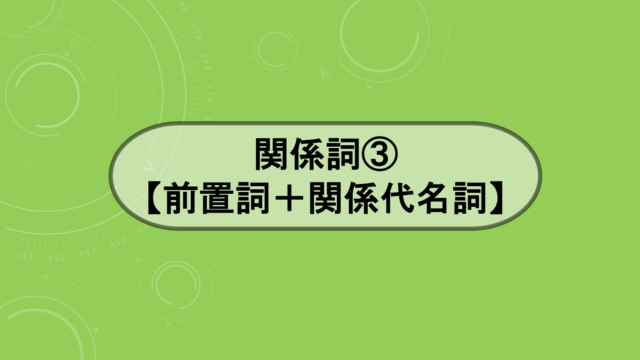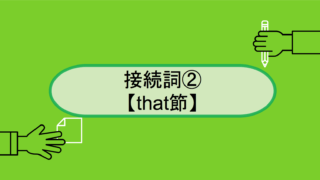等位接続詞とは
等位接続詞とは名前の通り、
等しい位のものを繋ぐ接続詞のことです。
等しい位=同じ働きで、同じ重要度のものです。
それではどんな働きをするのか確認していきましょう。
等位接続詞の種類と性質(=and / but / or / nor / for)
☆等位接続詞は 同じ働きのもの・同じ重要度のもの をつなぐ性質がある。
☆性質:文法上「同じ働き(形)」が来る
名詞 and 名詞
不定詞 and 不定詞
前置詞+名詞 and 前置詞+名詞
that節 and that節
文 and 文
上に例で示したように、等位接続詞(=and / but / or / nor / for)は
同じ働きで、同じ重要度のものを接続するという特徴があります。
☆基本の訳し方
A and B 「AとB」「AそしてB」
A but B 「AしかしB」
A or B 「AあるいはB」
A nor B 「AもBもない」
※後ろに文が来たら疑問文の語順になる。(=倒置する)
A for B 「A,というのもBだから」
① and ( but / or ) の後ろに注目する
② 同じ働きをしている語句を前から探す
例文を確認していきましょう。
Practice① (練習問題)
[問題1] 等位接続詞(and)がそれぞれ何と何をつないでいるかをわかるように、下線を引きなさい。また、各文を和訳しなさい。以下のポイントに注意して訳してください。等位接続詞を見極める時のポイント
① and ( but / or ) の後ろに注目する
② 同じ働きをしている語句を前から探す
(1) We worked by day and by night.
(2) Our teacher taught us how to make a good plan and carry it out.
(3) Our teacher tried to teach us how to make a good plan and carried it out.
(4) He said that he would join the party and that he was able to give a helping hand.
(5) He is good not only at singing but also at playing the guitar.
(6) We have heard of a dog attacking a postman who was delivering a letter, and tearing his trousers.
命令文が来る場合の特例の意味 (2パターンだけ)
1.命令文・・・、or ~ :「・・・さもないと~」
hurry up or you’ll miss the train.
訳:急いで!さもないと電車を逃しますよ。
2.命令文・・・、and ~ :「・・・そうすれば~」
Study hard and you can enter the college.
訳:一生懸命勉強しなさい、そうすればその大学に入れるよ。
等位接続詞を用いた表現
ここでは等位接続詞を使った表現を5つ確認していきます。
1. both A and B :「AとBの両方」
2. not A but B : 「AでなくB」
3. not only A but also B:「AだけでなくBも」
4. eihter A or B:「AかBのどちらか一方」
5. neither A nor B:「AもBも~ない」
both you and I were wrong.
あなたも私も間違っていた。
Not you but I were wrong.
あなたでなく私が間違っていました。
Not only you but also I were wrong.
あなたでだけでなく、私も間違っていました。
Either you or I was wrong.
あなたか私の一方が間違っていた。
Neither you nor I was wrong.
あなたも私も間違っていなかった。
“neither ~ nor” はnot(否定)とくっついて否定の表現となっています。
neither = not + either
nor = not + or
Practice ②
[A] 空所に入る適語を選びなさい。(1) Neither I ( ) any of the other members could solve the problem.
①also ②and ③nor ④but
(2) Found in some fish, this substance is a deadly poison, ( ) it can be used in medicine to stop pain.
①because ②nor ③yet ④if
(3) Hurry up, ( ) you will miss the last train.
①but ②for ③or ④and
(4) Think success, ( ) you are more likely to succeed.
①and ②unless ③but ④or
(5) We will ( ) go to the movies or to a baseball game Friday night.
①both ②at ③either ④neither
(6) I think he is a very intelligent person, ( ) many people don’t agree with me.
①for ②who ③but ④which
(7) We have stayed at both good ( ) bad camping sites.
①and ②nor ③also ④or
(8) I have never been to the country, ( ) do I want to go there in the future.
①nor ②so ③or ④but
(9) Hurry up, ( ) you will be in time for the train.〈新潟薬科大〉
①or ②but ③if ④and
(10) Many students in the class could ( ) locate the country on the map nor name its capital city.〈近畿大〉
①both ②longer ③either ④neither
(11) He is always busy ( ) within and outside the country.〈東邦大〉
①both ②the both ③both of ④and both
(12) They are not crazy, ( ) are they fools.〈上智大〉
①both ②nor ③either ④or
[B] 次の日本文の意味になるように,( )内の語または語句を並べかえて適切な英文を作りなさい。(13) 急いで食べなさい。そうしないと列車に乗り遅れてしまうよ。
You had better eat in ( or / hurry / miss / you’ll / a ) the train.〈日本大〉
(14) 太郎は雨だから家に帰ったのではなく,疲れていたから家に戻ったのです。
Taro returned home (not because / it / but / he / was rainy / was tired / because).
(15) 人間は,言葉だけでなく,表情によっても意思を伝達するものだ。
People (also / but / communicate / expressions / facial / languages / not / only / with / with).
[C] 同じような意味になるように,空所に適語を書きなさい。(16) (a) Mike doesn’t like coffee. He doesn’t like tea, either.
(b) Mike likes ( ) coffee ( ) tea.
まとめ
それでは、今回学んだ等位接続詞の要点をまとめていきましょう。
☆等位接続詞は 同じ働きのもの・同じ重要度のもの をつなぐ性質がある。
☆性質:文法上「同じ働き(形)」が来る
☆訳し方:
A and B「AとB」「AそしてB」
A but B 「AしかしB」
A or B 「AあるいはB」
A nor B「AもBもない」※後ろに文が来たら疑問文の語順になる。(=倒置する)
A for B「A,というのもBだから」
☆命令文が来る場合の特例の意味
1. 命令文・・・、or ~:「・・・さもないと~」
2. 命令文・・・、and ~:「・・・そうすれば~」
☆等位接続詞を用いた表現
1. both A and B :「AとBの両方」
2. not A but B : 「AでなくB」
3. not only A but also B:「AだけでなくBも」
4. eihter A or B:「AかBのどちらか一方」
5. neither A nor B:「AもBも~ない」
これらの表現は、長文の中でも多く出てくるので、練習問題を解きながら
例文を覚えてしっかりと理解していきましょう。
今日もありがとうございました。

















